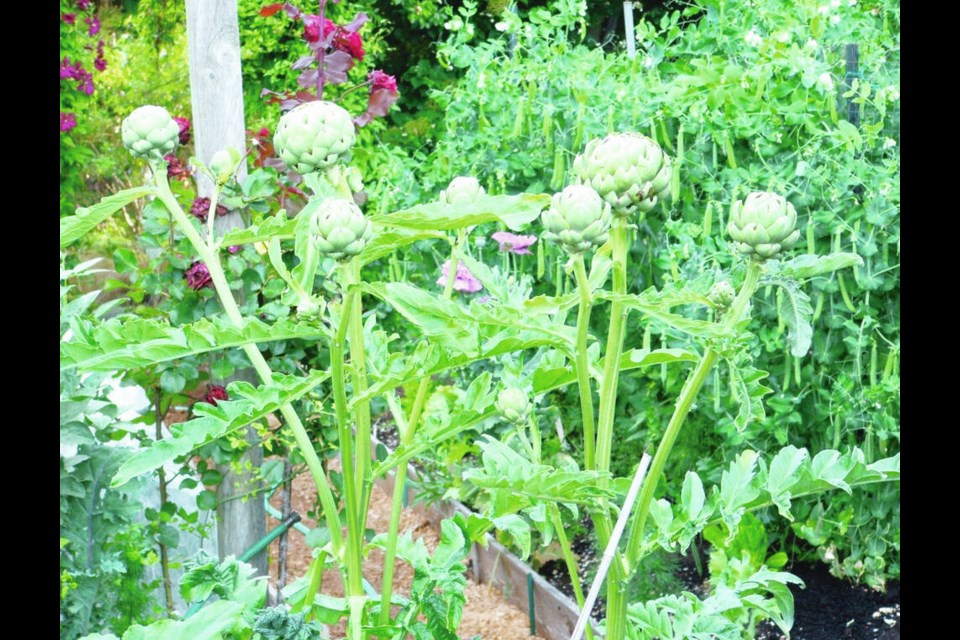Dear Helen: We have three lovely, lush looking rhododendrons in the front garden. They are 26 years old. They are pruned and fertilized at the appropriate times each year, but still they do not bloom. Last year we had four flowers between the three shrubs. This year there was one bloom. What to do?
M.S.
Minimal flower production on lush green growth is most commonly the result of an over-abundance of nitrogen in the soil, over-watering, or too much shade.
Rhododendrons need adequate moisture in the soil during the summer, as flower buds are forming, but sometimes too much water can inhibit this process. In some gardens, automatic watering systems need to be adjusted to prevent over-watering.
Over time, growth in nearby trees can develop enough to put flowering shrubs in too much shade. Rhododendrons cannot bloom well in deep, gloomy shade. Ideal is light or dappled shade, with some protection from the hottest, afternoon summer sun. Larger-leaved rhododendrons require more protection from the sun than small-leaved ones.
You don’t say what fertilizer you use. Products designed for acid-loving flowering shrubs are commonly available. They are best applied in spring, preferably after the usual flowering time and not after mid-July.
Since you describe the plants as “lush” you might consider a few dilute waterings with a no-nitrogen product like Alaska MorBloom. It contains only phosphorus and potassium, nutrients that help to promote flowering. Start now, and stop early in July, to help prompt flower bud formation.
As for pruning, the usual time, and only if the plants really require it, is immediately following the usual bloom period in spring. Pruning later can remove growth that is in the process of forming flower buds.
Dear Helen: As you have noted in your columns, some plants have been surprisingly slow to emerge, develop, or leaf out this spring. One of my red flowering currant shrubs has not yet shown any sign of leaf bud opening at the time of my writing this — the second week of May. At the same time, one of my evergreen ferns has yet to unfurl any new fronds. Is there anything I should be doing, apart from just remaining patient?
L.W.
I suspect that, by the time this question appears in the paper, you’ll have seen a little action in the puzzling plants. In this wonky spring, most gardens have had a few plants that seemed reluctant to revive themselves.
More than one person visiting my garden early this month suggested that a completely barren dwarf crape myrtle shrub was surely dead and should be removed from the garden. By mid-May, tiny leaf buds made an almost imperceptible appearance along the stems.
A series of cold snaps, especially one late in the winter season, did hit some plants hard. For the first time, one of my hardy fuchsias was winter-killed to the ground, but it will re-grow from its base. Most plants, though held back by the cold spring temperatures, survived.
I’m never quick to ring the death knell on plants in the spring. They are usually just “late” in time and not as in deceased. Plants dance to songs of the weather and their own internal drummers, and not necessarily to our tunes.
Dear Helen: Should globe artichoke plants be pruned after their early summer buds have been harvested?
M.R.
The only pruning commonly recommended is to cut the plants down close to the ground in late autumn, before protecting them for the winter with a loose mulching material. I’ve come across only one account of pruning the plants during the growing season.
The account was of an experiment at a research station in a climate like ours. Cut down after the first harvest, the plants re-grew to produce another crop of edible buds. I’ve never done this, but for those with more than a few plants it could be an interesting experiment to try on one or two.
GARDEN EVENT
Flower and Garden Show. The Mill Bay Garden Club is hosting the Mill Bay Community Flower and Garden Show on Saturda from 9 a.m. to 2 p.m. in the Cobble Hill Hall, 3550 Watson Ave. in Cobble Hill. Shop for plants, books, and garden accessories. Admire the exhibits and tap into the expertise of Master Gardeners. Enjoy a strawberry tea and participate in a silent auction. Entry $2 for adults. Children are admitted free.



